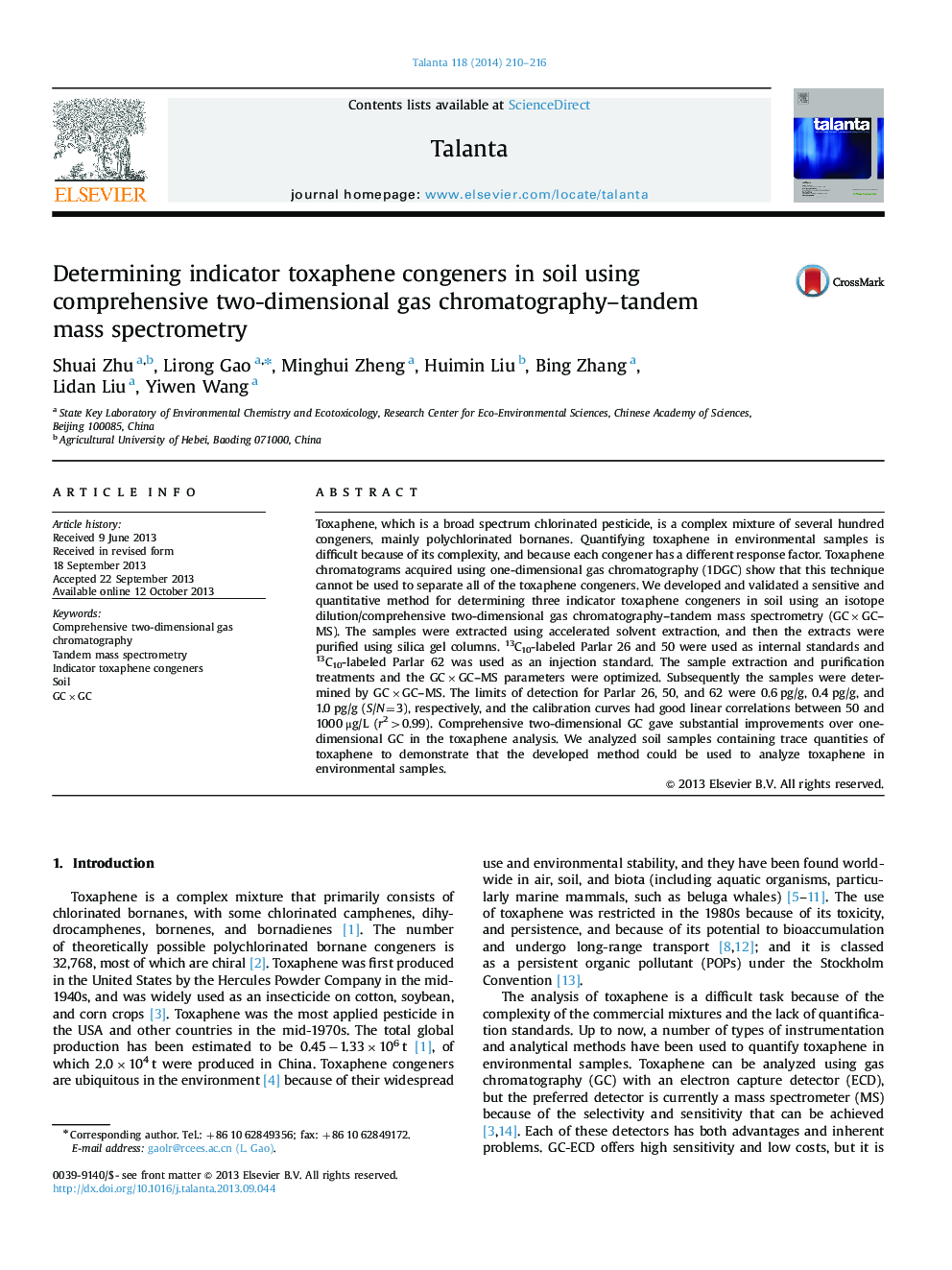| Article ID | Journal | Published Year | Pages | File Type |
|---|---|---|---|---|
| 1242109 | Talanta | 2014 | 7 Pages |
•We developed a new method for analyzing trace indicator toxaphene congeners in soil.•GC×GC–MS was used to effectively separate and determine the toxaphene components.•The detection limits for Parlar 26, 50, and 62 were ranged from 0.4 to 1.0 pg/g.
Toxaphene, which is a broad spectrum chlorinated pesticide, is a complex mixture of several hundred congeners, mainly polychlorinated bornanes. Quantifying toxaphene in environmental samples is difficult because of its complexity, and because each congener has a different response factor. Toxaphene chromatograms acquired using one-dimensional gas chromatography (1DGC) show that this technique cannot be used to separate all of the toxaphene congeners. We developed and validated a sensitive and quantitative method for determining three indicator toxaphene congeners in soil using an isotope dilution/comprehensive two-dimensional gas chromatography–tandem mass spectrometry (GC×GC–MS). The samples were extracted using accelerated solvent extraction, and then the extracts were purified using silica gel columns. 13C10-labeled Parlar 26 and 50 were used as internal standards and 13C10-labeled Parlar 62 was used as an injection standard. The sample extraction and purification treatments and the GC×GC–MS parameters were optimized. Subsequently the samples were determined by GC×GC–MS. The limits of detection for Parlar 26, 50, and 62 were 0.6 pg/g, 0.4 pg/g, and 1.0 pg/g (S/N=3), respectively, and the calibration curves had good linear correlations between 50 and 1000 μg/L (r2>0.99). Comprehensive two-dimensional GC gave substantial improvements over one-dimensional GC in the toxaphene analysis. We analyzed soil samples containing trace quantities of toxaphene to demonstrate that the developed method could be used to analyze toxaphene in environmental samples.
